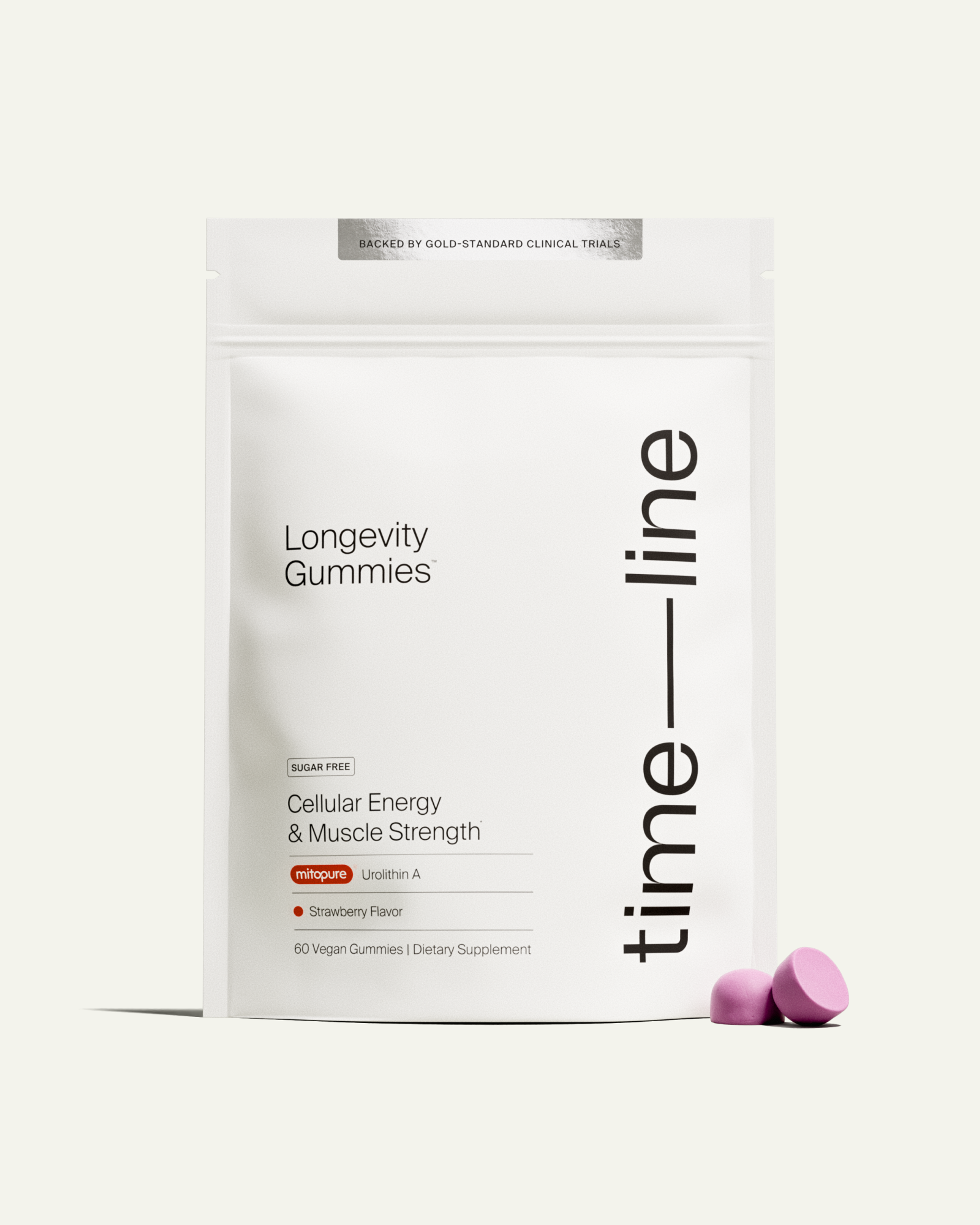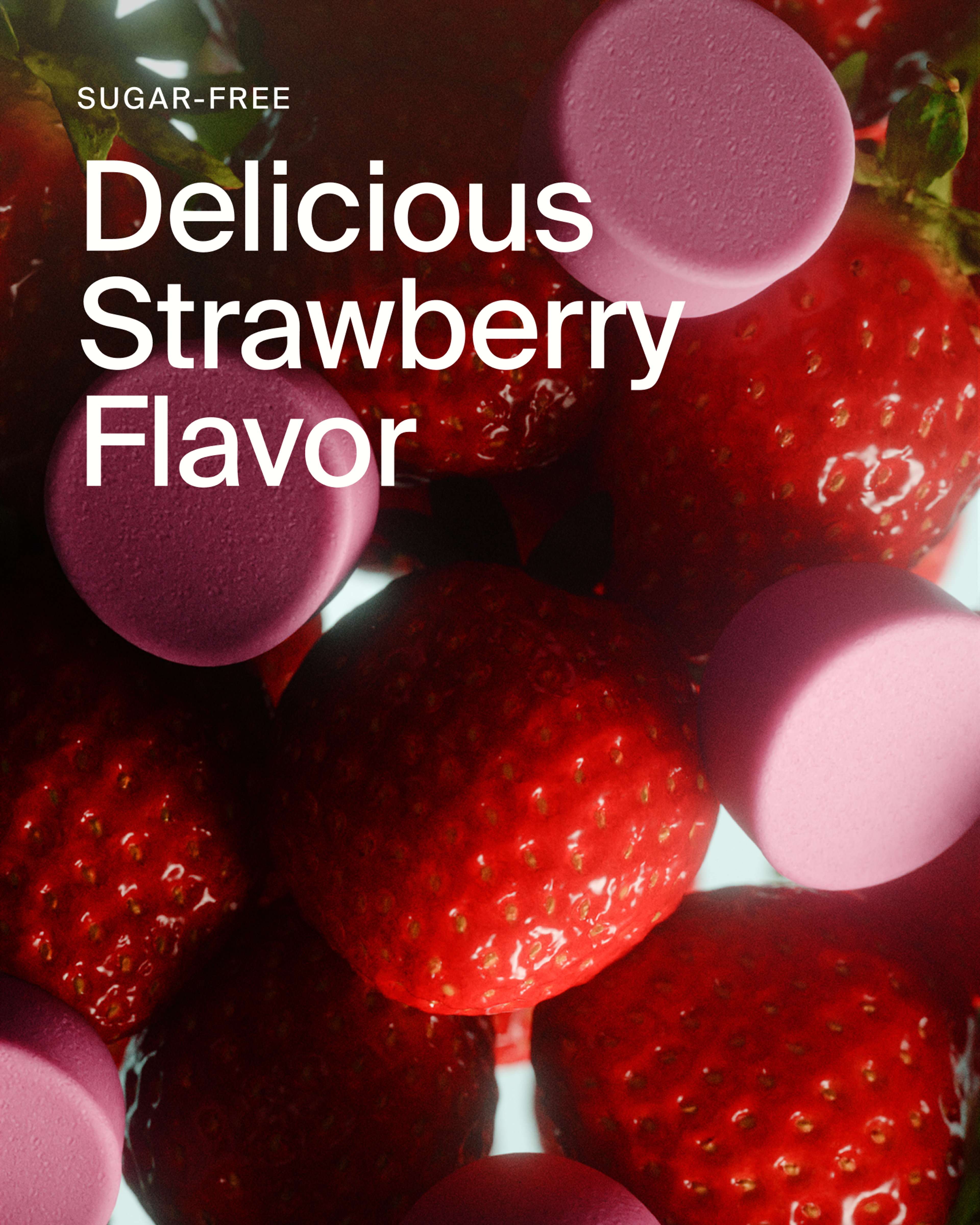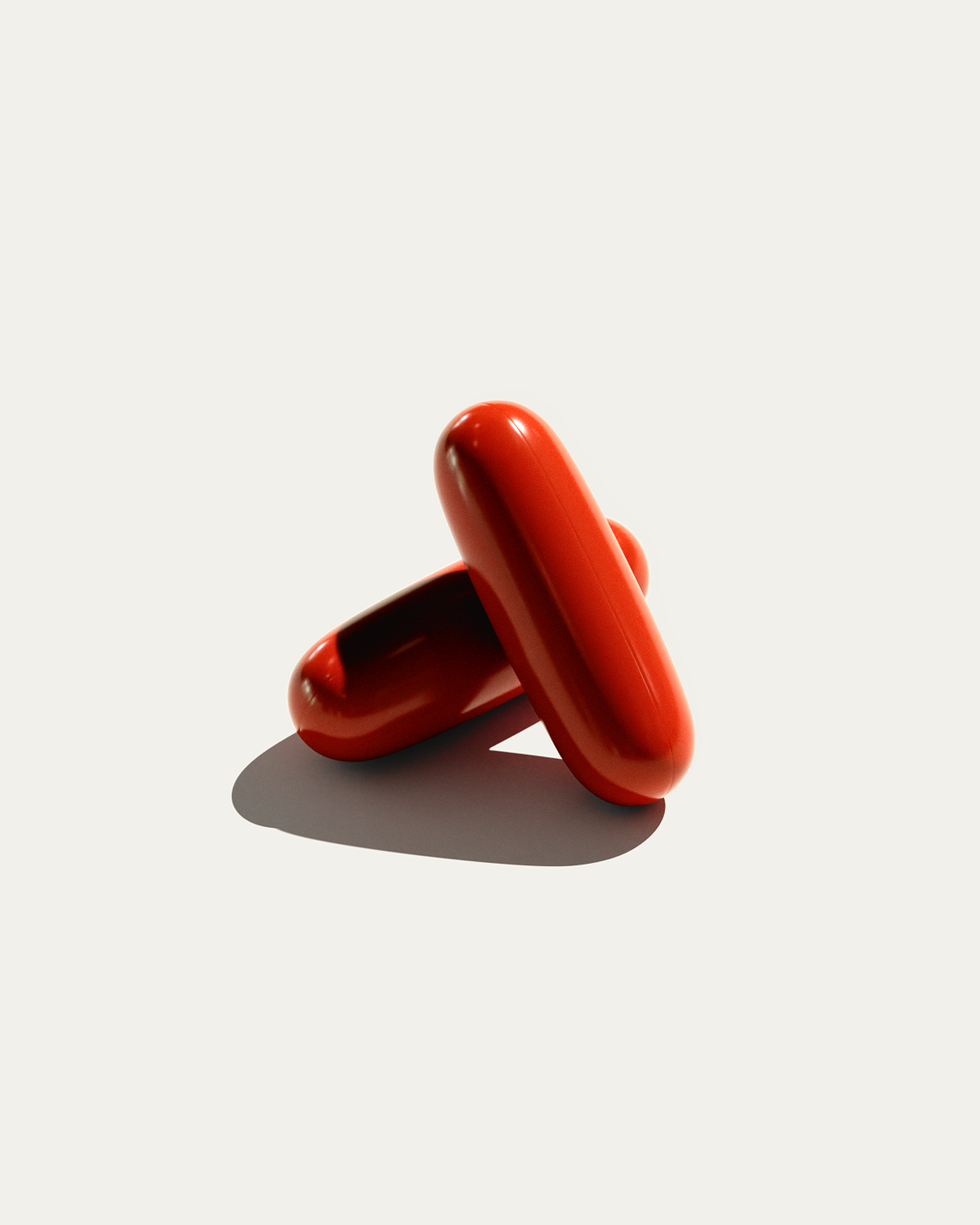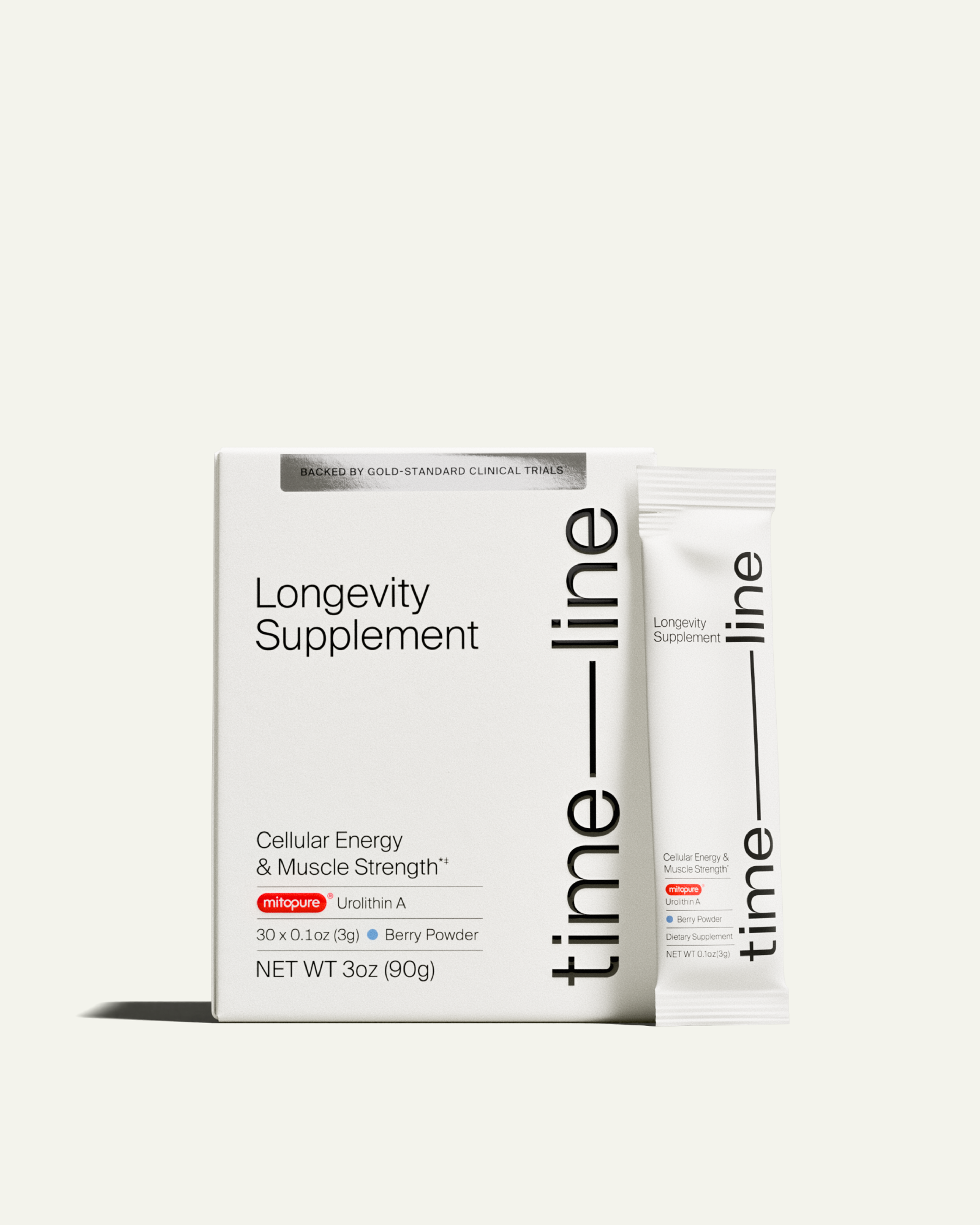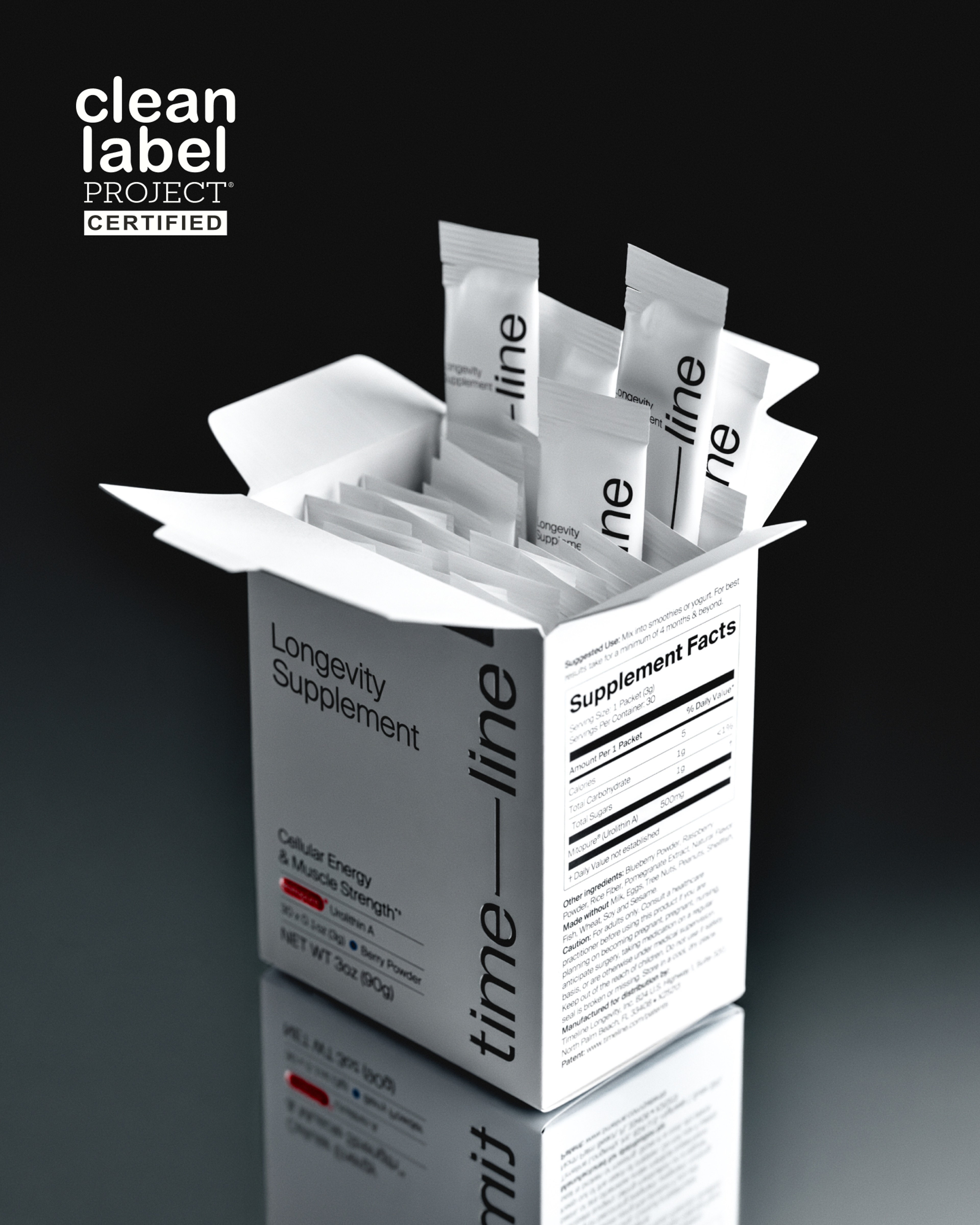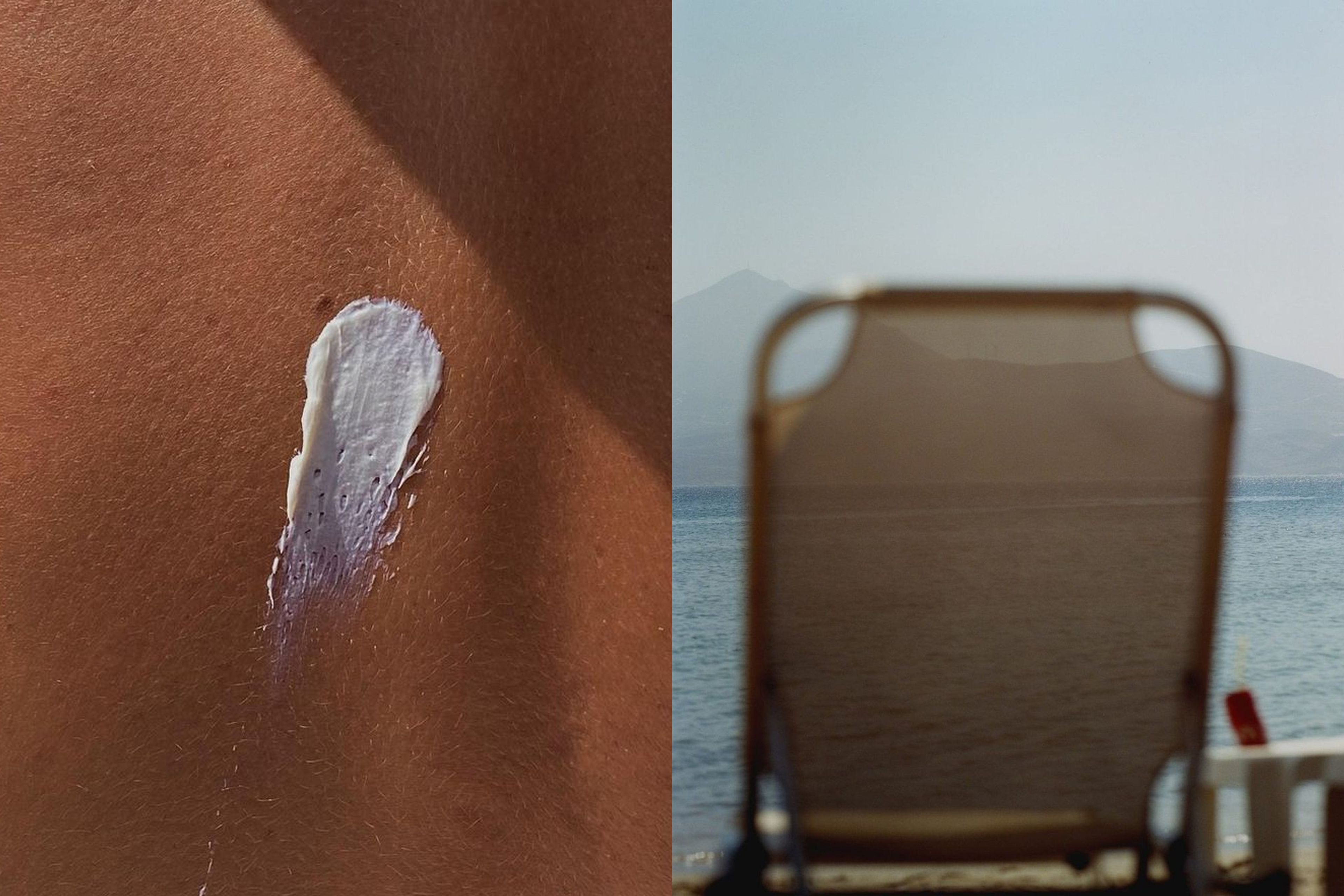A Longevity-Focused Men’s Skincare Routine
Skin health impacts cancer risk, your other organs, and total-body inflammation. Build an easy anti-aging men’s skincare routine with this guide.
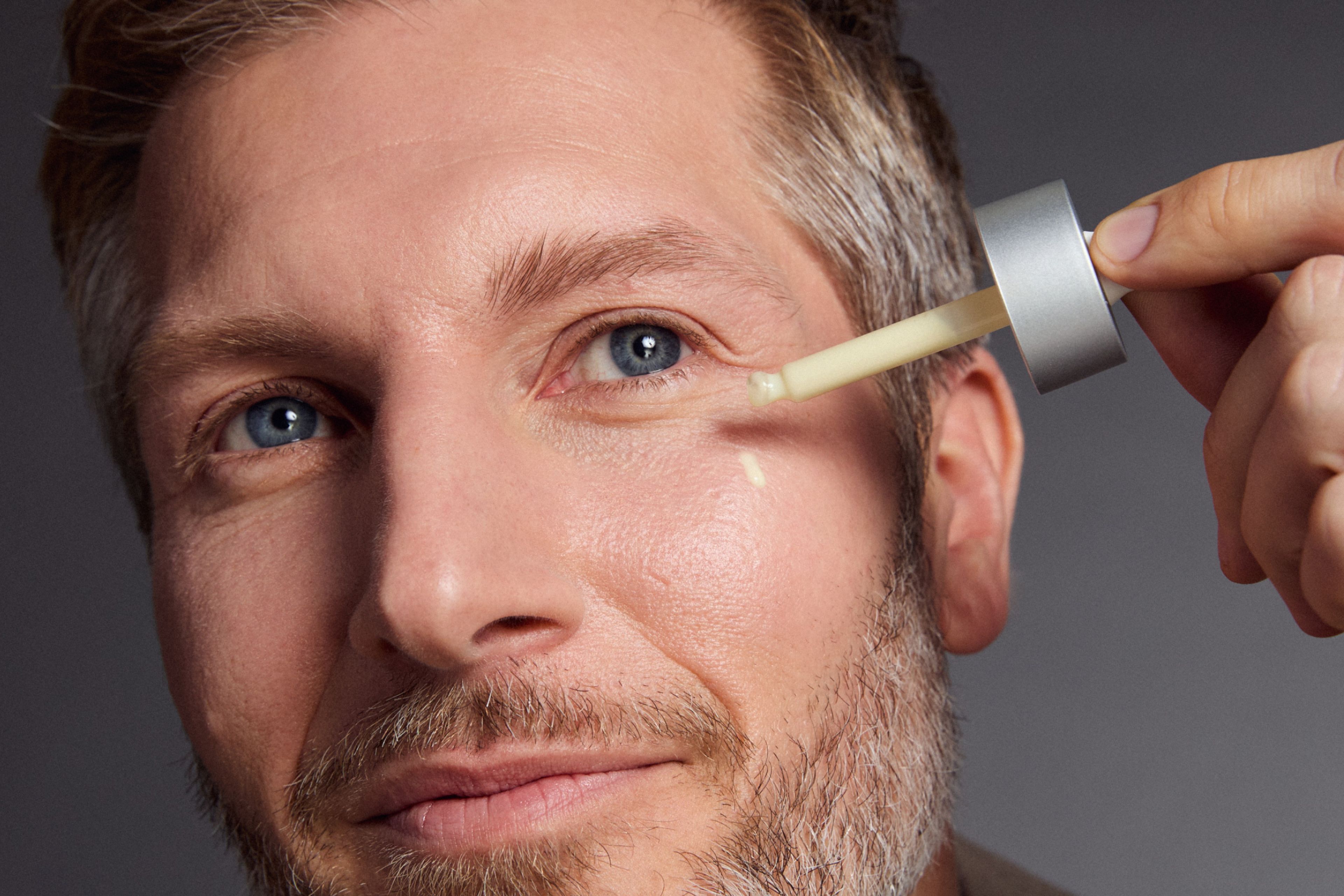
What to know
Skincare is crucial for men's health: Men face a higher risk of skin cancer and sun damage, making a consistent skincare routine essential for longevity.
Men's skin is different: Male skin requires tailored products for adequate protection and hydration.
Sunscreen is non-negotiable: Daily SPF use can block up to 97% of harmful UV rays, reducing the risk of skin cancer and premature aging.
Ingredients matter: Ingredients like Mitopure® combat cellular damage, boost skin resilience, and slow aging.
Regular skin checks are vital: Even with a solid skincare routine, yearly dermatologist visits are crucial for the early detection of potential skin issues.
With skin cancer rates at an all-time high, men are increasingly realizing that skincare is not just for women[1].
The skin is the body’s frontline defense—a barrier that shields you from pro-aging assaults, toxins, and UV radiation. While the concept of skincare may seem purely cosmetic, healthy skin is integral to longevity.[2]
For men, the connection between skincare and longevity is even more crucial, as men have a higher incidence of skin cancer and a higher mortality rate than women do.[3]
By adopting a simple, effective skincare routine, you’re investing in more than just appearance; you’re investing in your future.
Skincare is More Than Skin-Deep
Your skin is often the first to reveal the signs of aging, affected by both biological and external contributors.
Beyond its role as a protective barrier against infections, your skin helps keep your body’s systems balanced, regulating temperature and maintaining hydration.[4]
Research finds that the skin directly impacts overall health and wellness, underscoring the importance of a dedicated skincare routine for longevity.[5]
The Skin and Aging Intersection
Research suggests that sun damage is the main driver of aging skin, with UV exposure contributing to 80% of the visible signs of skin aging.[6]
Sun exposure can affect you on the cellular level. UV radiation from the sun disrupts the DNA within your cells and mitochondria, resulting in the development of free radicals. This results in genomic instability and mitochondrial dysfunction, two of the primary hallmarks of aging.
As these damaging free radicals accumulate, they continue to wreak havoc on the cell; this can accelerate aging and increase the risk of developing age-related conditions such as skin cancer.
Physiological Differences in Male Skin
There are surprising differences in the biology of male and female skin structure.[7]
- Thickness: Men’s skin is about 25% thicker than women’s.
- Sebum Production: Higher testosterone levels in men lead to more oil production, resulting in larger pores and a higher likelihood of acne.
- Trans-Epidermal Water Loss (TEWL): Men’s skin tends to lose water more quickly; it becomes key to use hydration-focused skincare to avoid dryness.
- pH Levels: Men’s skin is slightly more acidic, which can affect how it responds to skincare products.
Research also suggests that men's skin may be more vulnerable to environmental stressors like UV damage or heat.[8]
Despite these differences, many skincare products are not designed or tested for men.
The High Stakes of Skipping Skincare
The consequences of neglecting your skin can be severe. Skin cancer is the most common cancer in the United States, and men are at a significantly higher risk than women.
According to the American Cancer Society, this year, two times more men than women are estimated to die from melanoma, the deadliest form of skin cancer. [9]In the US, men are 40% more likely to develop skin cancer, and the incidence of melanoma has increased by 32% over the past decade—twice as fast for men compared to women[10].
This may also contribute to reduced longevity in men overall, as compared to women.
Three Simple Steps to Fight Skin Aging for Men
Starting a skincare routine doesn’t have to be complicated or time-consuming. With just a few simple steps, you can protect your skin from the elements, reduce signs of aging, and boost your overall health.
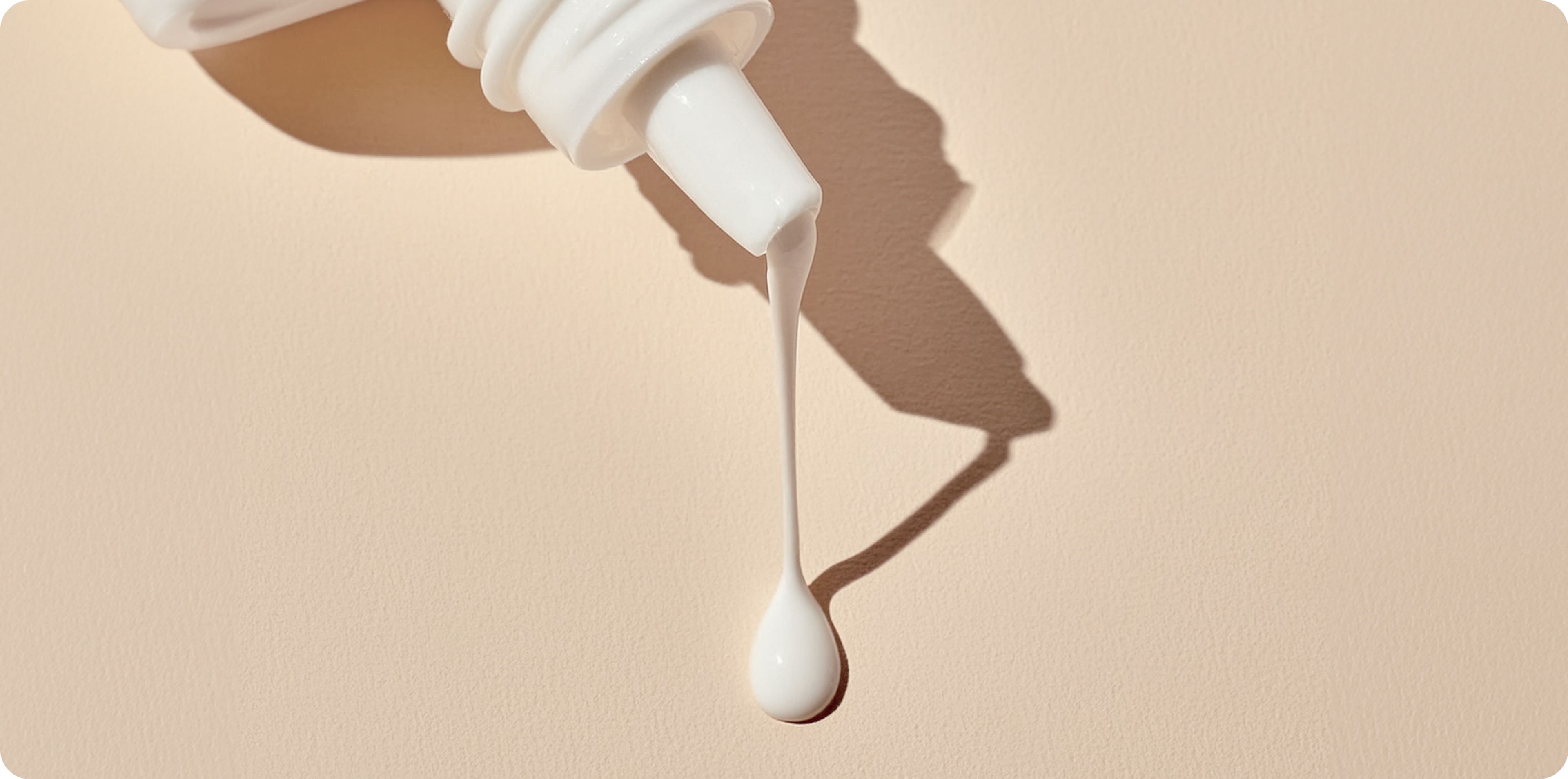
Step 1: Select Quality Products That Target the Root Causes of Aging
While sunscreen protects skin from UV radiation, most formulations do not focus on targeting the root causes of skin aging. For men looking to slow skin aging actively, consider the bioactive Mitopure®.
Topical application of Mitopure®, a potent form of Urolithin A, is clinically proven to slow intrinsic and extrinsic aging in the skin.[11] Mitopure® is the first bioactive proven to boost cellular energy, fortifying skin resilience from the inside out.
Studies using topical application of Mitopure demonstrated:[12]
- A visible reduction in fine lines and wrinkles in just two weeks' time
- An increase in gene activity responsible for collagen assembly and organization
- Protection from photoaging
Timeline Skincare
The Timeline Skincare line not only includes our breakthrough bioactive, but it also contains an antioxidant shield with ingredients such as niacinamide and anti-aging peptides.

Mito-Biotic™ Firming Serum
4.8 · 1447 reviews
Award-winning bioactive formula for renewal
Step 2: Use SPF Daily—Rain or Shine
One of the simplest and most effective ways to protect your skin is to use SPF daily. An SPF of 30 or higher can block up to 97% of the sun’s harmful UV rays, significantly reducing your risk of developing skin cancer.[13]
Remember that SPF doesn’t only go on your face. Cover any exposed skin, including your hands, neck, and ears. Remember to reapply every two hours if you’re spending time outdoors.
Don’t know where to start? Read more about the different types of sunscreens.
Step 3: Check for Moles and Get Regular Skin Exams
Even with the best skincare routine, it’s important to stay vigilant. Check your skin regularly for any new moles or changes to existing ones. If you notice anything unusual, see a dermatologist right away. Make it a habit to get a full-body skin exam from a professional at least once a year.
The Reality of Skincare for Men: What’s Missing?
Despite the growing awareness of the importance of skincare for men, many products on the market still need to be designed, tested, or marketed for this group. They often come with undesirable ingredients like parabens and fragrances, or feel more like a cosmetic rather than a health and wellness product.
That’s where Timeline’s Skincare line comes in. Our products are power-packed with clinically proven ingredients that slow aging and are free from harmful ingredients, including dyes and fragrances.
Conclusion: Invest in Your Skin, Invest in Your Future
By selecting quality products that target the root causes of aging, using SPF daily, and staying on top of skin checks, you can protect your skin from damage, reduce your risk of serious conditions like skin cancer, and maybe even add years to your life.
Remember, skincare isn’t just about looking good—it’s about living well. So, start your routine today and enjoy the benefits of healthier, more resilient skin for years to come.
Authors
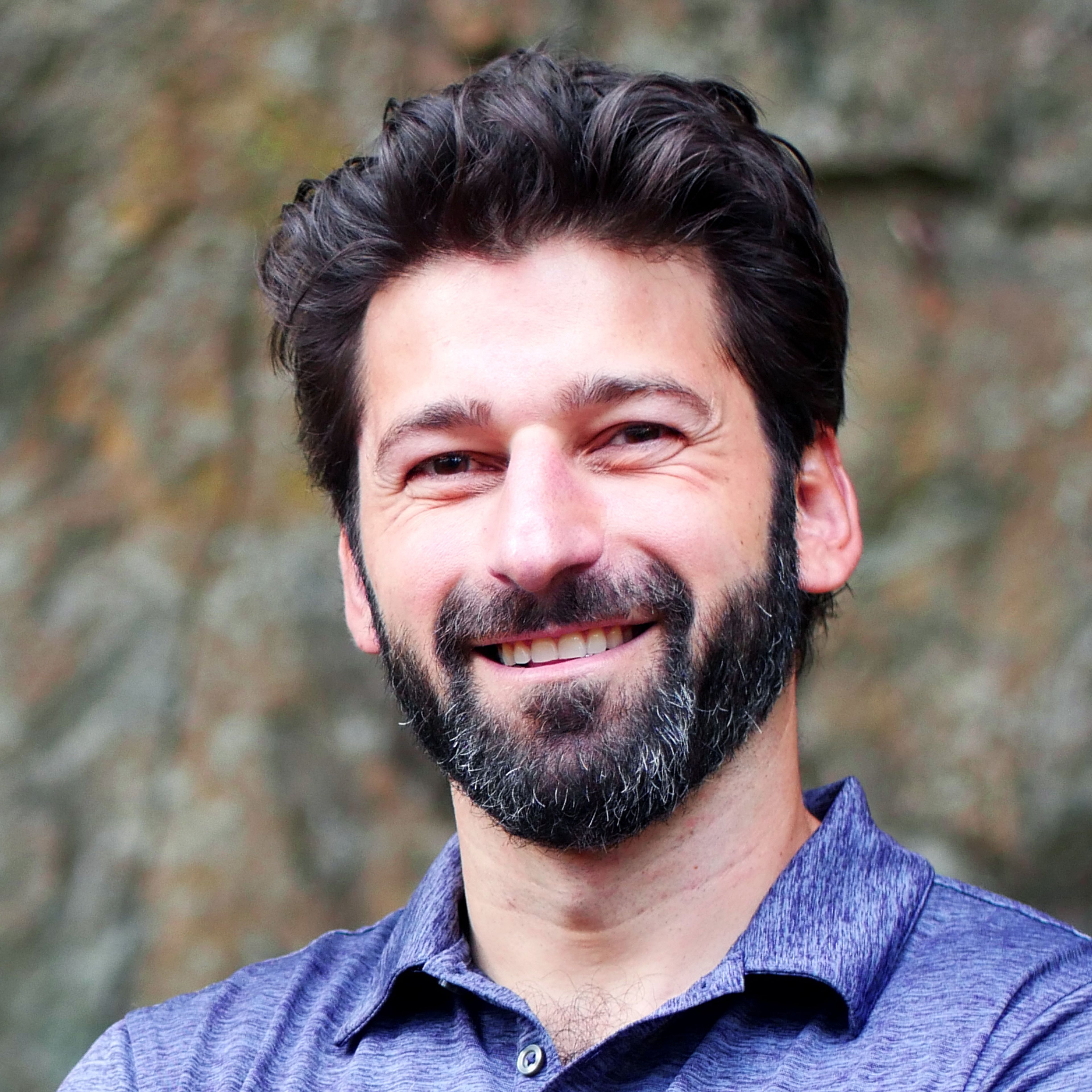
Written by
Health & Fitness Writer

Reviewed by
Director Science Communications
References
- ↑
Urban, K., Mehrmal, S., Uppal, P., Giesey, R. L., & Delost, G. R. (2021). The global burden of skin cancer: A longitudinal analysis from the Global Burden of Disease Study, 1990-2017. JAAD international, 2, 98–108. https://doi.org/10.1016/j.jdin.2020.10.013
- ↑
Blume-Peytavi, U., Kottner, J., Sterry, W., Hodin, M., Griffiths, T., Watson, R., Hay, R., & Griffiths, C. (2016). Age-Associated Skin Conditions and Diseases: Current Perspectives and Future Options.. The Gerontologist, 56 Suppl 2, S230-42 . https://doi.org/10.1093/geront/gnw003.
- ↑
Damian, D. L., Patterson, C. R., Stapelberg, M., Park, J., Barnetson, R. S., & Halliday, G. M. (2008). UV radiation-induced immunosuppression is greater in men and prevented by topical nicotinamide. The Journal of investigative dermatology, 128(2), 447–454. https://doi.org/10.1038/sj.jid.5701058
Oblong J. E. (2012). Comparison of the impact of environmental stress on male and female skin. The British journal of dermatology, 166 Suppl 2, 41–44. https://doi.org/10.1111/j.1365-2133.2012.10928.x - ↑
Kim JY, Dao H. Physiology, Integument. [Updated 2023 May 1]. In: StatPearls [Internet]. Treasure Island (FL): StatPearls Publishing; 2024 Jan-. Available from: https://www.ncbi.nlm.nih.gov/books/NBK554386/
- ↑
Blume-Peytavi, U., Kottner, J., Sterry, W., Hodin, M., Griffiths, T., Watson, R., Hay, R., & Griffiths, C. (2016). Age-Associated Skin Conditions and Diseases: Current Perspectives and Future Options.. The Gerontologist, 56 Suppl 2, S230-42 . https://doi.org/10.1093/geront/gnw003.
- ↑
Flament F, Bazin R, Laquieze S, Rubert V, Simonpietri E, Piot B. Effect of the sun on visible clinical signs of aging in Caucasian skin. Clin Cosmet Investig Dermatol. 2013 Sep 27;6:221-32. doi: 10.2147/CCID.S44686. PMID: 24101874; PMCID: PMC3790843.
- ↑
Sikora, B. C., Wortzman, M., Nelson, D. B., & Dover, J. S. (2021). A pilot study evaluating the efficacy and tolerability of a comprehensive, hydrating topical antioxidant developed specifically for men. Journal of cosmetic dermatology, 20(9), 2816–2823. https://doi.org/10.1111/jocd.14314
Rahrovan, S., Fanian, F., Mehryan, P., Humbert, P., & Firooz, A. (2018). Male versus female skin: What dermatologists and cosmeticians should know. International journal of women's dermatology, 4(3), 122–130. https://doi.org/10.1016/j.ijwd.2018.03.002 - ↑
Rahrovan, S., Fanian, F., Mehryan, P., Humbert, P., & Firooz, A. (2018). Male versus female skin: What dermatologists and cosmeticians should know. International journal of women's dermatology, 4(3), 122–130. https://doi.org/10.1016/j.ijwd.2018.03.002
- ↑
Key Statistics for Melanoma Skin Cancer. American Cancer Society. Last revised: January 17, 2024. Accessed July 15, 2024. https://www.cancer.org/cancer/types/melanoma-skin-cancer/about/key-statistics.html
- ↑
Skin Cancer Facts & Statistics. American Skin Cancer Foundation. Accessed July 15, 2024. https://www.skincancer.org/skin-cancer-information/skin-cancer-facts/
Schwartz MR, Luo L, Berwick M. Sex Differences in Melanoma. Curr Epidemiol Rep. 2019;6(2):112-118. doi:10.1007/s40471-019-00192-7 - ↑
D D’Amico, AM Fouassier, J Faitg, N Hennighausen, M Brandt, D Konstantopoulos, C Rinsch, A Singh. Topical application of Urolithin A slows intrinsic skin aging and protects from UVB-mediated photodamage: Findings from Randomized Clinical Trials. medRxiv. Posted June 20, 2023 https://doi.org/10.1101/2023.06.16.23291378
- ↑
D D’Amico, AM Fouassier, J Faitg, N Hennighausen, M Brandt, D Konstantopoulos, C Rinsch, A Singh. Topical application of Urolithin A slows intrinsic skin aging and protects from UVB-mediated photodamage: Findings from Randomized Clinical Trials. medRxiv. Posted June 20, 2023 https://doi.org/10.1101/2023.06.16.23291378
- ↑
American Academy of Dermatology. (2019). Dermatologists say sunscreen is a vital tool in the fight against skin cancer, the most common cancer in the U.S. https://www.aad.org/news/sunscreen-is-a-vital-tool-in-the-fight-against-skin-cancer
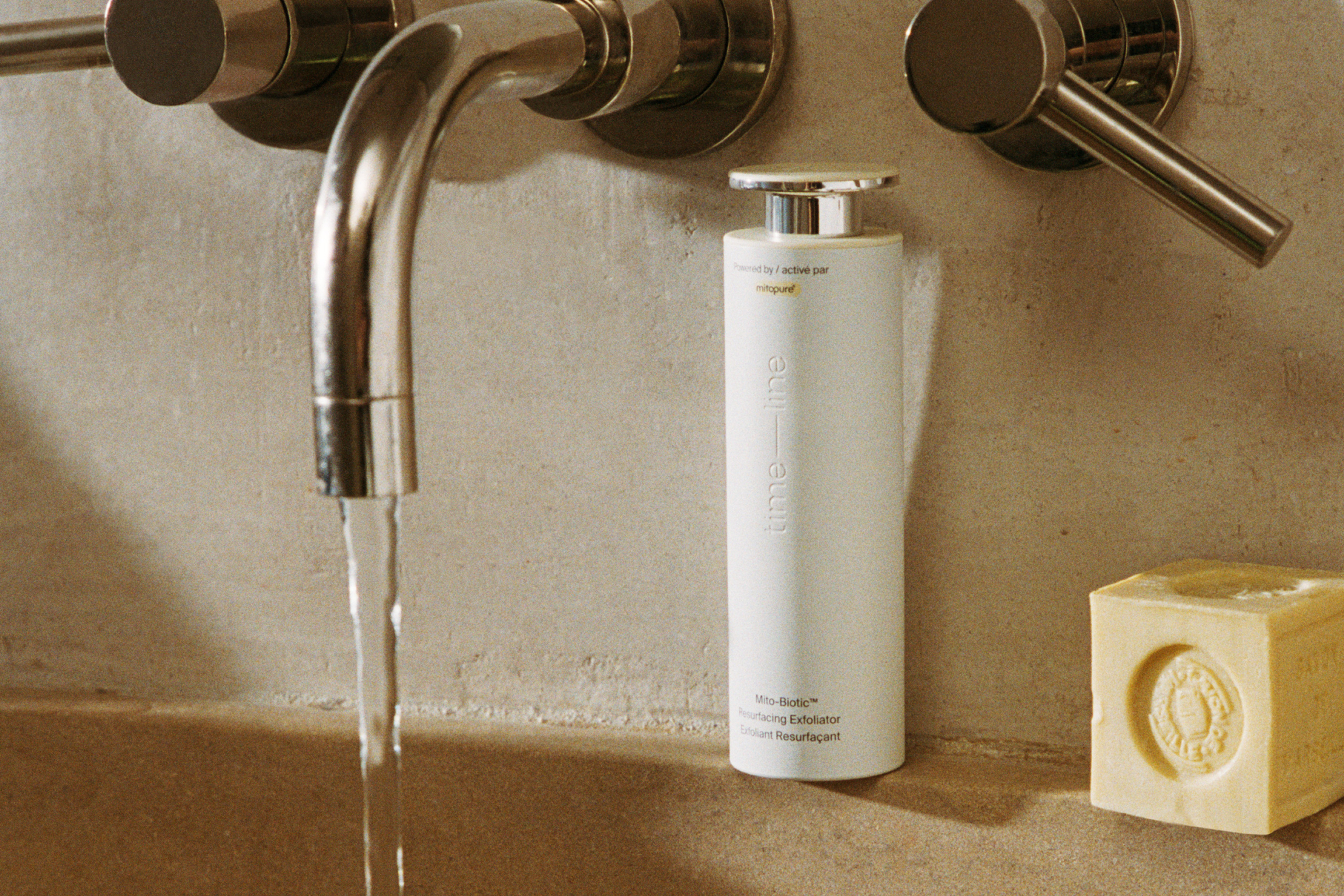
·
Should You Exfoliate in the Winter?
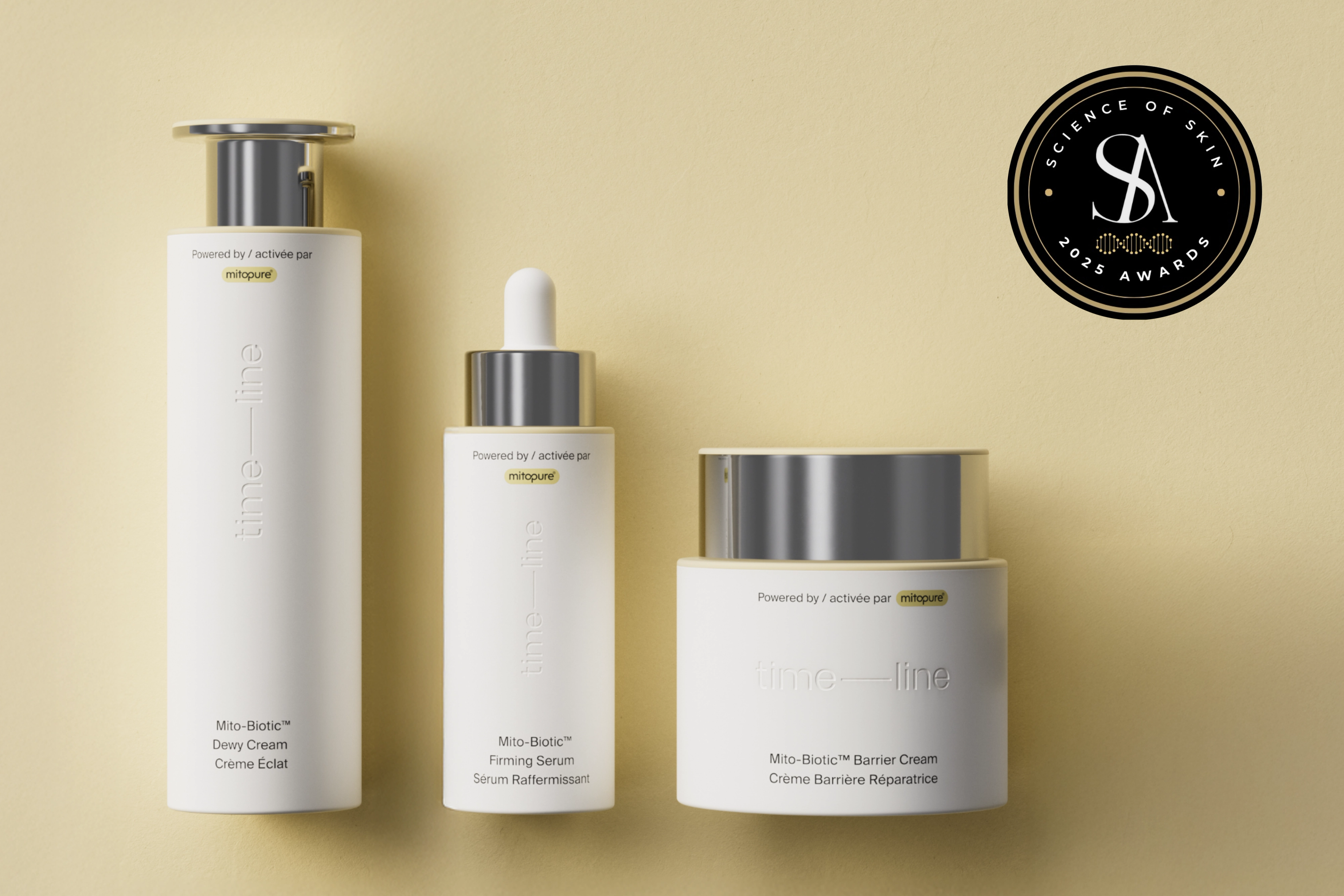
Video
